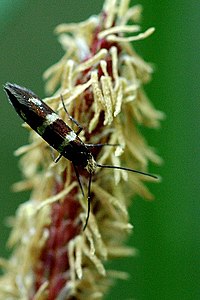Taxonomy of the Lepidoptera

The
derived group, mainly day-flying, called butterflies (superfamily Papilionoidea). Within Lepidoptera as a whole, the groups listed below before Glossata contain a few basal families accounting for less than 200 species; the bulk of Lepidoptera are in the Glossata. Similarly, within the Glossata, there are a few basal groups listed first, with the bulk of species in the Heteroneura
. Basal groups within Heteroneura cannot be defined with as much confidence, as there are still some disputes concerning the proper relations among these groups. At the family level, however, most groups are well defined, and the families are commonly used by hobbyists and scientists alike.
Unassigned fossil lepidopterans
- Family unassigned (12 genera, 16 species)
- Family Archaeolepidae
- Family Mesokristenseniidae
- Family Eolepidopterigidae
- Family Undopterigidae
Suborder Zeugloptera
- Superfamily Micropterigoidea
- Family Micropterigidae
Suborder Aglossata
- Superfamily Agathiphagoidea
- Family Agathiphagidae
- Family
Suborder Heterobathmiina
- Superfamily Heterobathmioidea
- Family Heterobathmiidae
- Family
Suborder Glossata
Infraorder Dacnonypha

- Superfamily Eriocranioidea
- Family Eriocraniidae
Clade Coelolepida, encompassing all remaining groups
Infraorder Acanthoctesia
- Superfamily Acanthopteroctetoidea
- Family Acanthopteroctetidae
Infraorder Lophocoronina
- Superfamily Lophocoronoidea
- Family Lophocoronidae
- Family
Clade Myoglossata, encompassing all remaining groups
Infraorder Neopseustina
- Superfamily Neopseustoidea
- Family Neopseustidae
- Family Aenigmatineidae[1]
Clade Neolepidoptera, encompassing all remaining groups
Infraorder Exoporia

- Superfamily Mnesarchaeoidea
- Family Mnesarchaeidae
- Superfamily Hepialoidea
- Family Palaeosetidae
- Family Prototheoridae
- Family Neotheoridae
- Family Anomosetidae
- Family Hepialidae
Infraorder Heteroneura
Clade Nepticulina
- Superfamily Nepticuloidea
- Family Nepticulidae
- Family Opostegidae
Clade Eulepidoptera, encompassing all remaining groups
Clade Incurvariina
- Superfamily Andesianoidea
- Family Andesianidae
- Superfamily Adeloidea
- Family Heliozelidae
- Family Adelidae
- Family Incurvariidae
- Family Cecidosidae
- Family Prodoxidae
Clade Etimonotrysia
- Superfamily Palaephatoidea
- Family Palaephatidae
- Superfamily Tischerioidea
- Family Tischeriidae
- Family
Clade Ditrysia, encompassing all remaining groups
- unassigned (25 genera, 100 species)
- Family Millieriidae
- Superfamily Tineoidea
- Family Acrolophidae
- Family Arrhenophanidae
- Family Eriocottidae
- Family Psychidae
- Family Tineidae
- Family
- Superfamily Gracillarioidea
- Family Roeslerstammiidae
- Family Bucculatricidae
- Family Gracillariidae
- Superfamily Yponomeutoidea
- Family Yponomeutidae
- Family Argyresthiidae
- Family Plutellidae
- Family Glyphipterigidae
- Family Ypsolophidae
- Family Attevidae
- Family Praydidae
- Family Heliodinidae
- Family Bedelliidae
- Family Lyonetiidae
- Family
Clade Apoditrysia, encompassing all remaining groups
- unassigned superfamily
- Family Prodidactidae
- Family Douglasiidae
- Family
- Superfamily Simaethistoidea
- Family Simaethistidae
- Family
- Superfamily Gelechioidea
- Family Autostichidae
- Family Lecithoceridae
- Family Xyloryctidae
- Family Blastobasidae
- Family Oecophoridae
- Family Schistonoeidae
- Family Lypusidae
- Family Chimabachidae
- Family Peleopodidae
- Family Elachistidae
- Family Syringopaidae
- Family Coelopoetidae
- Family Stathmopodidae
- Family Epimarptidae
- Family Batrachedridae
- Family Coleophoridae
- Family Momphidae
- Family Pterolonchidae
- Family Scythrididae
- Family Cosmopterigidae
- Family Gelechiidae
- Superfamily Alucitoidea
- Family Tineodidae
- Family Alucitidae
- Superfamily Pterophoroidea
- Family Pterophoridae
- Superfamily Carposinoidea
- Family Copromorphidae
- Family Carposinidae
- Superfamily Schreckensteinioidea
- Family Schreckensteiniidae
- Superfamily Epermenioidea
- Family Epermeniidae
- Superfamily Urodoidea
- Superfamily Immoidea
- Family Immidae
- Superfamily Choreutoidea
- Family Choreutidae
- Superfamily Galacticoidea
- Family Galacticidae
- Superfamily Tortricoidea
- Family Tortricidae
- Superfamily Cossoidea
- Family Brachodidae
- Family Cossidae
- Family Dudgeoneidae
- Family Metarbelidae
- Family Ratardidae
- Family Castniidae
- Family Sesiidae
- Superfamily Zygaenoidea
- Family Epipyropidae
- Family Cyclotornidae
- Family Heterogynidae
- Family Lacturidae
- Family Phaudidae
- Family Dalceridae
- Family Limacodidae
- Family Megalopygidae
- Family Aididae
- Family Somabrachyidae
- Family Himantopteridae
- Family Zygaenidae
Clade Obtectomera, encompassing all remaining groups
- Superfamily Whalleyanoidea
- Family Whalleyanidae
- Family
- Superfamily Thyridoidea
- Family Thyrididae
- Superfamily Hyblaeoidea
- Family Hyblaeidae
- Superfamily Calliduloidea
- Family Callidulidae
- Superfamily Papilionoidea (butterflies)
- Family Papilionidae
- Family Hedylidae
- Family Hesperiidae
- Family Pieridae
- Family Riodinidae
- Family Lycaenidae
- Family Nymphalidae
- Family
- Superfamily Pyraloidea
- Superfamily Mimallonoidea
- Family Mimallonidae
Clade Macroheterocera (Macrolepidoptera sensu sticto), encompassing all remaining groups
Catocala nupta
, red underwing, a noctuid moth
- Superfamily Drepanoidea
- Family Cimeliidae
- Family Doidae
- Family Drepanidae
- Superfamily Lasiocampoidea
- Family Lasiocampidae
- Superfamily Bombycoidea
- Family Apatelodidae
- Family Eupterotidae
- Family Brahmaeidae
- Family Phiditiidae
- Family Anthelidae
- Family Carthaeidae
- Family Endromidae
- Family Bombycidae
- Family Saturniidae
- Family Sphingidae
- Superfamily Geometroidea
- Family Epicopeiidae
- Family Pseudobistonidae[3]
- Family Sematuridae
- Family Uraniidae
- Family Geometridae
- Superfamily Noctuoidea
- Family Oenosandridae
- Family Notodontidae
- Family Erebidae
- Family Euteliidae
- Family Nolidae
- Family Noctuidae
References
- Capinera, John L. (Editor). (2008). Encyclopedia of Entomology, (2nd Ed). Springer Reference. in Google Books.
- van Nieukerken, Erik J.; Lauri Kaila; Ian J. Kitching; Niels P. Kristensen; David C. Lees; Joël Minet; Charles Mitter; Marko Mutanen; Jerome C. Regier; Thomas J. Simonsen; Niklas Wahlberg; Shen-Horn Yen; Reza Zahiri; David Adamski; Joaquin Baixeras; Daniel Bartsch; Bengt Å. Bengtsson; John W. Brown; Sibyl Rae Bucheli; Donald R. Davis; Jurate De Prins; Willy De Prins; Marc E. Epstein; Patricia Gentili-Poole; Cees Gielis; Peter Hättenschwiler; Axel Hausmann; Jeremy D. Holloway; Axel Kallies; Ole Karsholt; Akito Y. Kawahara; Sjaak (J.C.) Koster; Mikhail V. Kozlov; J. Donald Lafontaine; Gerardo Lamas; Jean-François Landry; Sangmi Lee; Matthias Nuss; Kyu-Tek Park; Carla Penz; Jadranka Rota; Alexander Schintlmeister; B. Christian Schmidt; Jae-Cheon Sohn; M. Alma Solis; Gerhard M. Tarmann; Andrew D. Warren; Susan Weller; Roman V. Yakovlev; Vadim V. Zolotuhin; Andreas Zwick (23 December 2011). Zhang, Zhi-Qiang (ed.). "Order Lepidoptera Linnaeus, 1758" (PDF). Zootaxa. Animal biodiversity: An outline of higher-level classification and survey of taxonomic richness. 3148: 212–221..
- Scoble, M.J. (1995) The Lepidoptera: form, function and diversity. The Oxford University Press, Oxford UK. ISBN 0-19-854952-0. Ltd previewin Google Books.
